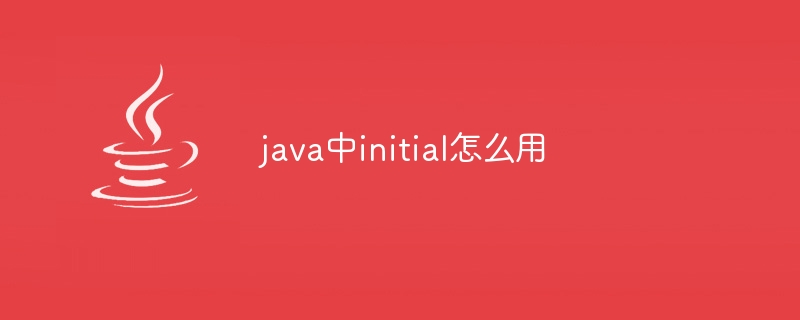Home >Java >javaTutorial >How to use initial in java
How to use initial in java
- 下次还敢Original
- 2024-04-26 21:45:23496browse
The initial method in Java is used to specify the default value in the Optional type, and returns the value when the Optional is empty. This method accepts a non-null value as argument and returns an Optional instance containing that value. The initial method avoids cumbersome null checks and ensures that a non-null value is returned when the value is null.

In Javainitial Usage
In Java,initial method is a utility method for the Optional type that allows you to specify a default value that will be returned if the Optional is empty.
Syntax:
<code class="java">public static <T> Optional<T> initial(T value)</code>
Parameters:
-
value- To be used as the default value non-null value.
Return value:
An Optional instance containing value.
Usage: The
initial method is useful for handling values that may be null. By using initial, you can avoid using cumbersome null checks while still ensuring that a non-null value is returned when the value is null.
Example:
<code class="java">Optional<String> name = Optional.initial("Alice");
if (name.isPresent()) {
String n = name.get();
System.out.println("Name: " + n);
} else {
System.out.println("Name is not present");
}</code>
In the above example, name is an Optional containing the value "Alice". The isPresent() method is used to check if Optional is not empty, and if so, retrieve the value via the get() method.
Note: The
-
initialmethod is only available forOptionaltypes. - The provided default value must be non-null.
- If
Optionalis not empty, the default value will not be used.
The above is the detailed content of How to use initial in java. For more information, please follow other related articles on the PHP Chinese website!
Related articles
See more- Why can only one class be declared as public in a Java file?
- How Can I Execute System Commands in Java?
- How to Return an HTTP 400 \'Bad Request\' Error in Spring MVC @ResponseBody Methods?
- How to Get Method Parameter Names and Types Using Java Reflection?
- Why is My KeyListener Not Responding in My JFrame?

